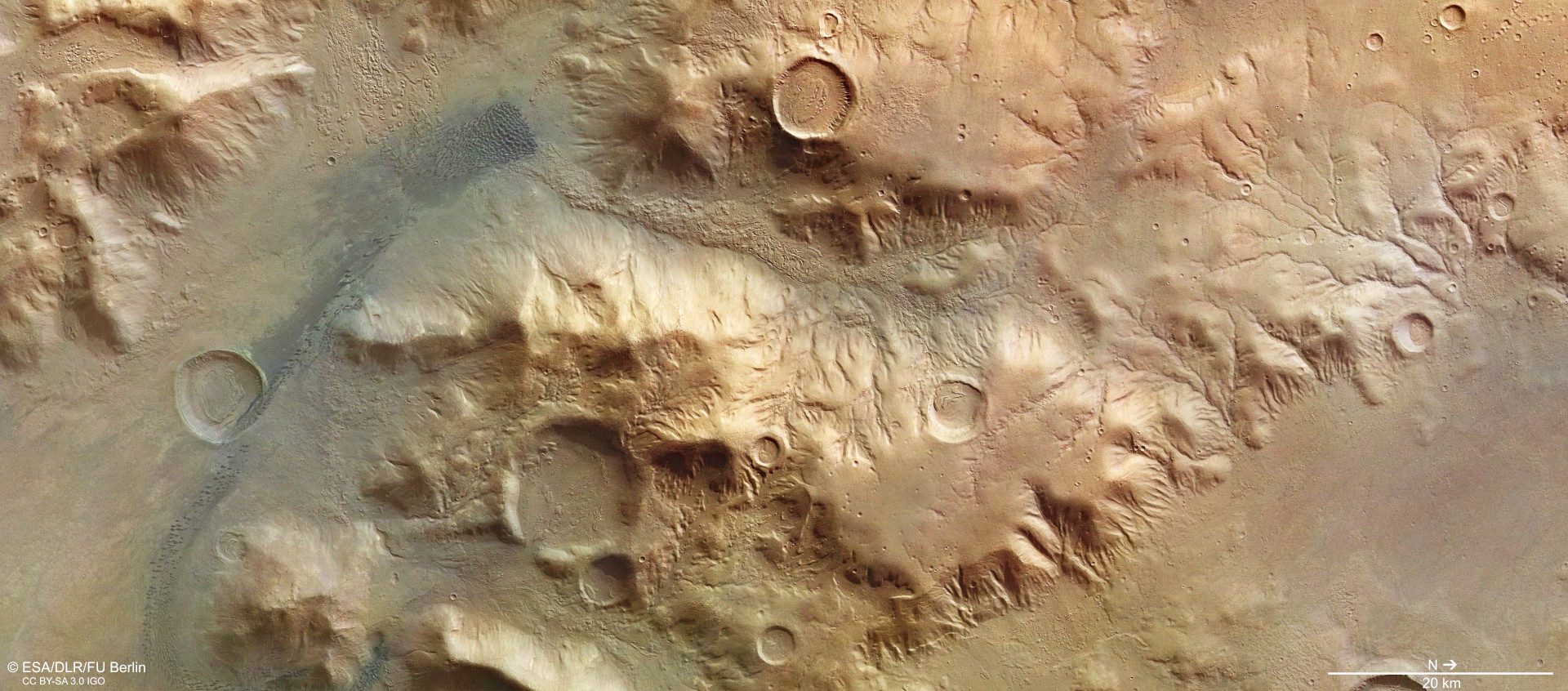A landslide has been spotted on Mars. The surface movement activity was reported by a European orbiter. It observed a rapid movement of the planet’s surface material. The orbiter has captured 5-km-long landslides. The orbiter that has reported such activities is Exo-Mars Orbiter. The mission was launched in 2016. It is a joint astrobiology program by the ESA and Roscosmos. The ESA said that the orbiter’s images show a movement dominating the landslide. The images were first captured by the orbiter in April. It was reported near the rim of a crater in the Aeolis region. It is a plain between the Gale crater and Aeolis Mons.
The agency said that landslides show a geomorphological process. It occurs under certain environmental conditions. According to the ESA, the geomorphology process comes on Earth as well. On both Mars and Earth, it is reported in different shapes and sizes. The Martian landslide photos show a rapid collapse of material. The deposit zones are also visible. It shows great details like flow ridges. According to the impact craters, it appears that the event didn’t occur in recent times. The ESA said that it is difficult to determine the accurate date of the landslide. The orbiter captured the views while mapping the surface for water-rich locations on the planet.
The Exo-Mars Orbiter had in past captured a views trio of craters. The craters were in the Lunae Planum region. It is believed that the region was once covered by large lava deposits. The lava deposits were a result of Tharsis Montes volcanoes nearby. Although the orbiter arrived at the Red Planet in 2016, it started a science mission in 2018. The orbiter’s goals include looking for possible signs of past life on the Red Planet and probe how water and Mars’ geochemical environment varies. It will also study the planet’s atmospheric trace gases and sources. Besides, the orbiter will demonstrate the technologies that will be crucial in planning a sample return mission from the Red Planet.
